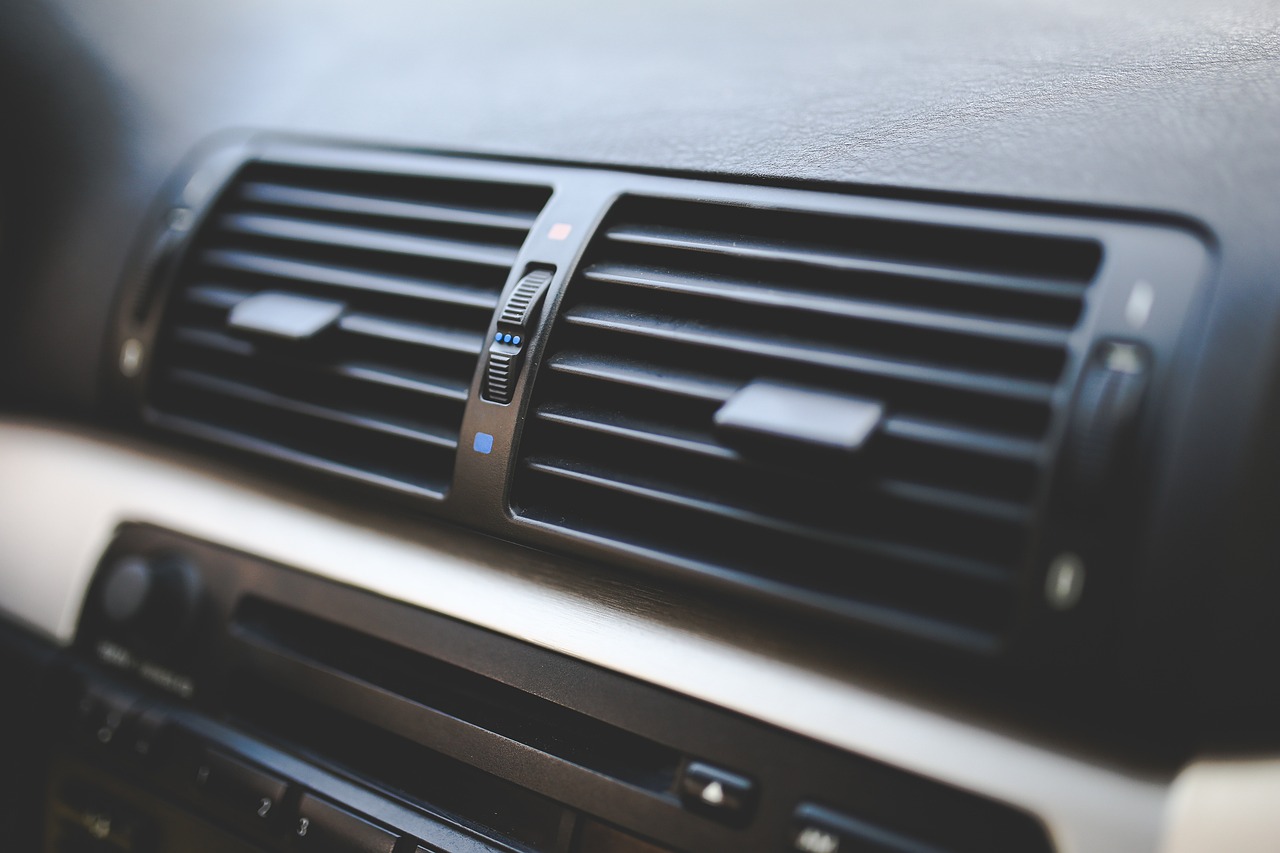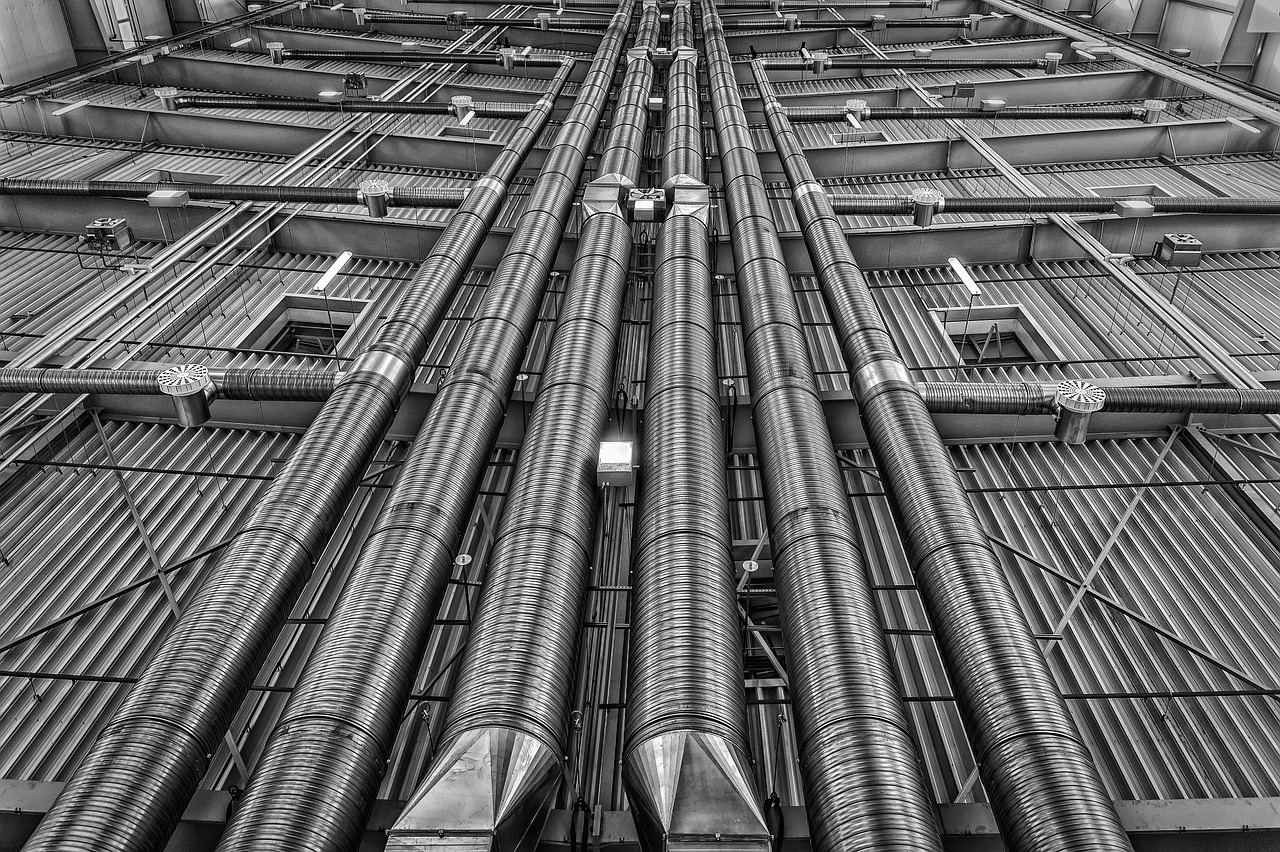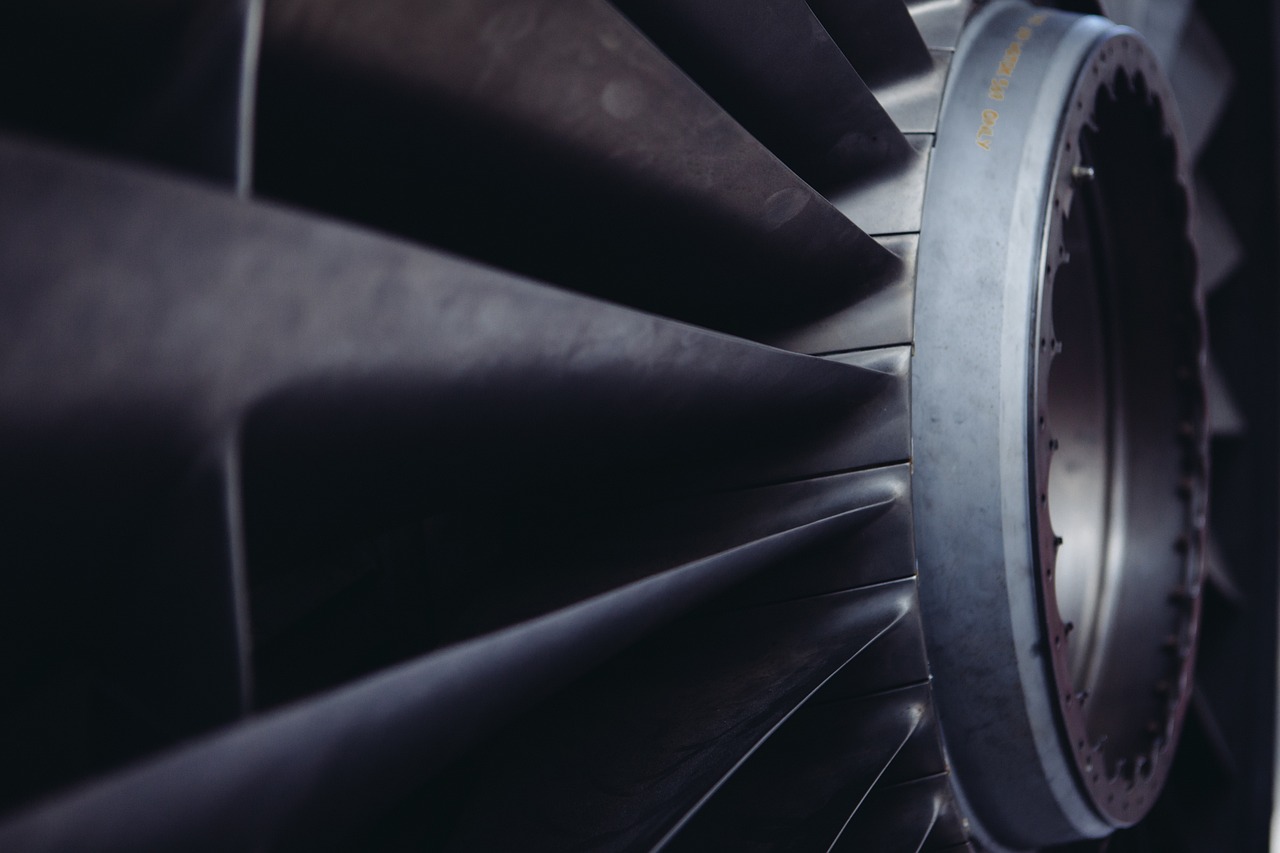Table of Contents
- The Initial Investment
- Energy Efficiency Matters
- Proper Sizing and Maintenance
- Smart Thermostats and Programmable Controls
- Sealing and Insulation
- Utilizing Natural Cooling Strategies
- While air conditioning undoubtedly provides comfort during hot summer months, it doesn’t have to drain your bank account. By making informed choices when purchasing an energy-efficient system, maintaining it regularly and implementing smart cooling strategies, you can enjoy the benefits of air conditioning while keeping your energy bills in check. The economics of air conditioning can be a win-win scenario
In the scorching heat of summer, air conditioning is a true lifesaver, providing us with comfort and respite from the sweltering temperatures. However, as anyone who has ever received a hefty energy bill knows, staying cool comes at a cost. In this article, we’ll explore the economics of air conditioning and share some valuable tips on how to save money while keeping your home comfortably cool.
“In the scorching heat of summer, air conditioning is a true lifesaver, providing us with comfort and respite from the sweltering temperatures. However, as anyone who has ever received a hefty energy bill knows, staying cool comes at a cost. In this article, we’ll explore the economics of air conditioning and share some valuable tips on how to save money while keeping your home comfortably cool.
While we all appreciate the luxury of air conditioning, it’s essential to recognize the environmental impact as well. The energy consumption associated with cooling our homes contributes to greenhouse gas emissions and climate change. As such, our pursuit of indoor comfort also has a global footprint.
The Economics of Energy Efficiency One critical aspect of the air conditioning economics equation is energy efficiency. Energy-efficient air conditioning units not only save you money but also reduce your carbon footprint. Advances in technology have led to the development of systems that use significantly less electricity while delivering the same level of cooling comfort. Investing in one of these units can lead to substantial long-term savings and a reduced environmental impact.
Renewable Energy Integration An emerging trend in the world of air conditioning economics is the integration of renewable energy sources. Solar-powered air conditioning units, for instance, harness the sun’s energy to cool your home. While the upfront cost of solar panels and a solar-powered AC system may be higher, the long-term savings and environmental benefits make it an attractive option for eco-conscious homeowners.
The Importance of Home Insulation Reducing your reliance on air conditioning altogether is another approach to consider. Proper home insulation can keep your living space cooler in the summer and warmer in the winter. By retaining conditioned air and preventing outdoor heat from infiltrating your home, you can significantly reduce the need for continuous AC use.
Leveraging Off-Peak Hours Many utility companies offer off-peak pricing for electricity, which can be considerably lower than peak rates. To take advantage of this, consider running your air conditioner during off-peak hours when possible. Programmable thermostats can be programmed to coincide with these times, allowing you to stay cool without breaking the bank.
The Future of Air Conditioning Innovation in the air conditioning industry continues to evolve. Researchers are exploring cutting-edge technologies like magnetic cooling and advanced materials that could revolutionize the way we cool our homes. As these technologies become more accessible and affordable, they could redefine the economics of air conditioning once again.
In conclusion, the economics of air conditioning extend beyond your monthly energy bill. It encompasses environmental considerations, energy efficiency and forward-thinking strategies that not only save you money but also reduce your carbon footprint. By making informed choices and embracing emerging technologies, you can enjoy the benefits of air conditioning while minimizing its economic and environmental costs.”
Don’t stop here; you can continue your exploration by following this link for more details: What Is Economic Growth and How Is It Measured?
The Initial Investment
Before we delve into the savings, it’s essential to consider the initial investment when installing an air conditioning system. The cost can vary significantly depending on factors like the type of system, its size and the complexity of the installation. While it may seem like a substantial expense upfront, an energy-efficient air conditioner can pay for itself over time through reduced energy bills.
Before we dive into the potential long-term savings associated with air conditioning, it’s crucial to understand the initial investment required for installing a cooling system. The upfront cost can vary widely depending on several key factors, including the type of system you choose, its size and the complexity of the installation process. While it’s understandable that this initial expense may raise concerns, it’s important to recognize that an energy-efficient air conditioning system represents a smart investment in both your comfort and financial well-being. Here’s a closer look at why the initial cost is a prudent choice in the context of long-term savings:
System Selection: The type of air conditioning system you opt for plays a significant role in the initial cost. Central air conditioning systems, for example, may have a higher upfront price compared to ductless or window units. However, central systems offer superior cooling efficiency and coverage, potentially resulting in more substantial long-term savings.
Sizing Matters: Choosing the right-sized AC unit for your space is essential. An oversized unit may cool your space too quickly, leading to short cycling and reduced efficiency. Conversely, an undersized unit may struggle to maintain a comfortable temperature. Professional guidance during the selection process ensures you invest in the appropriately sized system.
Energy Efficiency: Energy-efficient air conditioners may have a higher initial cost but are designed to consume less energy while delivering effective cooling. Look for systems with high SEER (Seasonal Energy Efficiency Ratio) ratings, as they can significantly reduce your energy bills over time.
Installation Complexity: The complexity of the installation can affect the overall cost. Retrofitting an existing home with a central air system may require more extensive work, potentially increasing installation expenses. However, the long-term benefits of efficient cooling and improved home value can outweigh this initial cost.
Return on Investment: Consider your air conditioning system as a long-term investment. While the initial expense may seem significant, think about the potential return in terms of energy savings, enhanced comfort and increased property value.
Energy Bill Reduction: An energy-efficient air conditioner can substantially reduce your monthly energy bills. Over the years, these savings can offset the initial investment, ultimately leading to a positive financial impact.
Environmental Benefits: Energy-efficient cooling systems also have a reduced environmental footprint. Lower energy consumption means fewer greenhouse gas emissions, contributing to a more sustainable and eco-friendly lifestyle.
Comfort and Well-Being: An energy-efficient air conditioner doesn’t just save money; it also enhances your overall quality of life. Consistent and efficient cooling keeps your home comfortable, contributing to your physical and mental well-being.
Resale Value: Upgrading to an energy-efficient cooling system can increase the resale value of your home. Potential buyers are often willing to pay more for a property with energy-saving features.
Government Incentives: Explore any available government incentives or rebates for energy-efficient HVAC installations. These programs can help offset the initial cost and accelerate your return on investment.
In summary, while the initial investment in an energy-efficient air conditioning system may seem substantial, it’s a prudent choice with numerous long-term benefits. Beyond the immediate cost, consider the potential for energy savings, improved comfort, environmental responsibility and increased property value. By investing wisely in a cooling system that prioritizes efficiency, you not only enhance your quality of life but also secure a more comfortable and financially sound future.
Explore this link for a more extensive examination of the topic: Energy Efficiency: Buildings and Industry | Department of Energy

Energy Efficiency Matters
When shopping for an air conditioner, pay close attention to its Energy Efficiency Ratio (EER) or the Seasonal Energy Efficiency Ratio (SEER). Higher EER or SEER ratings indicate greater energy efficiency, which translates to lower operating costs in the long run. Investing in an energy-efficient unit may require a slightly larger upfront cost, but the savings over its lifespan can be substantial.
When in the market for an air conditioner, making a thoughtful choice based on energy efficiency can yield numerous benefits for your wallet and the environment. Here’s a more comprehensive look at the importance of the Energy Efficiency Ratio (EER) and Seasonal Energy Efficiency Ratio (SEER) and why they should guide your purchase:
Understanding EER and SEER: EER and SEER ratings are like the fuel efficiency labels for air conditioners. They provide a clear indication of how efficiently an AC unit uses electricity to cool your space. EER is a measure of efficiency at a specific temperature and humidity level, while SEER accounts for efficiency variations over a typical cooling season.
Lower Operating Costs: AC units with higher EER or SEER ratings consume less electricity to deliver the same cooling output. This translates into lower energy bills month after month. While you may pay more upfront for an energy-efficient unit, you’ll recoup these costs through reduced operating expenses over the lifespan of the system.
Long-Term Savings: Consider your air conditioner as a long-term investment. While you might save a few dollars by choosing a less efficient unit initially, the cumulative savings over the years with an energy-efficient AC can be substantial. You’ll enjoy a consistently comfortable home while spending less on cooling.
Environmental Benefits: Energy-efficient AC units are more environmentally friendly. They use less electricity, which reduces the demand for power generation and the associated greenhouse gas emissions. By choosing an efficient unit, you contribute to a greener, more sustainable future.
Rebates and Incentives: Many regions offer rebates, tax incentives or utility programs that encourage the installation of energy-efficient appliances, including air conditioners. These incentives can offset the higher upfront cost and make the investment even more financially attractive.
Improved Comfort: Higher-efficiency AC units often come with advanced features that enhance comfort, such as variable-speed compressors and better humidity control. This means not only lower energy bills but also a more comfortable indoor environment.
Quiet Operation: Energy-efficient AC units are designed to operate quietly, reducing noise disturbances in your home. This contributes to a peaceful and enjoyable living space.
Enhanced Durability: Energy-efficient units are typically built with higher-quality components and better engineering. This can lead to a longer lifespan and reduced maintenance requirements, further enhancing your long-term savings.
Resale Value: An energy-efficient air conditioner can boost the resale value of your home. Prospective buyers are often willing to pay more for a home with lower energy operating costs and a more environmentally friendly HVAC system.
Peace of Mind: With an energy-efficient AC unit, you can enjoy peace of mind knowing that you’re making a responsible and cost-effective choice. You won’t have to constantly worry about soaring energy bills during hot summer months.
In conclusion, the EER and SEER ratings of an air conditioner are critical factors to consider when making a purchase decision. While an energy-efficient unit may require a slightly larger upfront investment, the long-term benefits far outweigh the initial cost. You’ll enjoy lower operating costs, a more comfortable home and contribute to a sustainable future—all while ensuring that your investment pays off handsomely over time.
If you’d like to dive deeper into this subject, there’s more to discover on this page: Energy Efficiency: Buildings and Industry | Department of Energy

Proper Sizing and Maintenance
One common mistake homeowners make is installing an air conditioner that is either too large or too small for their space. An oversized unit will cycle on and off frequently, wasting energy, while an undersized unit will struggle to cool the space efficiently. Ensuring your system is correctly sized for your home can prevent unnecessary energy expenses.
Regular maintenance is another key factor in saving money with your air conditioner. Dirty filters, clogged coils and refrigerant leaks can all reduce efficiency and increase energy consumption. By scheduling routine maintenance checks and cleaning or replacing filters, you can optimize your system’s performance and prolong its lifespan.
For a comprehensive look at this subject, we invite you to read more on this dedicated page: A Guide to Energy-Efficient Heating and Cooling

Smart Thermostats and Programmable Controls
Smart thermostats are excellent tools for maximizing your air conditioning’s efficiency. These devices can learn your habits and adjust the temperature settings accordingly. You can also control them remotely via smartphone apps, ensuring your home is comfortably cool when you return while conserving energy when you’re away.
Smart thermostats have emerged as invaluable assets in the quest to optimize the efficiency of your air conditioning system. Their capabilities extend far beyond conventional thermostats, offering a range of benefits that contribute to both comfort and energy savings. Here’s a more in-depth look at why smart thermostats are essential tools for managing your air conditioning efficiently:
1. Learning and Adaptation: One of the standout features of smart thermostats is their ability to learn your temperature preferences and daily routines. Over time, these devices analyze your cooling patterns and automatically adjust temperature settings to align with your comfort needs. This learning process ensures that your home remains comfortably cool when you’re present while conserving energy when you’re away. It’s a proactive approach to climate control that reduces the need for constant manual adjustments.
2. Remote Control: Smart thermostats grant you unparalleled control over your home’s climate from virtually anywhere. Using smartphone apps or web interfaces, you can remotely monitor and adjust temperature settings. This functionality proves invaluable, allowing you to ensure your home is cool and inviting upon your return after a long day or even modify settings during unexpected changes in plans.
3. Energy Efficiency: The ability to fine-tune temperature settings with precision enhances energy efficiency. You can create customized schedules that align with your daily routine, optimizing cooling when needed and reducing it during periods of inactivity. This results in significant energy savings and lower utility bills over time. Some smart thermostats even provide energy consumption reports, allowing you to track your usage and identify opportunities for further efficiency improvements.
4. Compatibility: Smart thermostats are often compatible with a wide range of heating, ventilation and air conditioning (HVAC) systems, making them suitable for various homes and setups. Whether you have a central AC system, a heat pump or a multi-zone setup, there’s likely a smart thermostat that can seamlessly integrate with your HVAC equipment.
5. Integration with Smart Home Ecosystems: Smart thermostats can be integrated into larger smart home ecosystems, allowing for synchronized control alongside other connected devices. This integration enables scenarios like automatically adjusting the thermostat when you lock the front door or coordinating cooling with lighting and shades to maximize energy savings.
6. Maintenance Alerts: Some smart thermostats offer maintenance alerts and reminders. They can notify you when it’s time to change filters, schedule routine HVAC system check-ups or address potential issues, helping prolong the lifespan of your AC system and ensuring it operates at peak performance.
7. Environmental Responsibility: By enhancing energy efficiency, smart thermostats contribute to reducing your carbon footprint and environmental impact. This aligns with sustainable living principles and eco-conscious choices, promoting a greener and more responsible approach to climate control.
In essence, smart thermostats are indispensable tools for achieving the perfect balance between comfort and energy efficiency in your home. Their learning capabilities, remote control features and adaptability empower you to create a tailored cooling experience while minimizing energy waste. With the ability to make data-driven decisions about your indoor climate, you can enjoy a more comfortable and cost-effective living environment.
Should you desire more in-depth information, it’s available for your perusal on this page: SMUD offers tips to stay cool and save money

Sealing and Insulation
A well-insulated and sealed home is crucial for efficient cooling. Leaky windows, doors and poorly insulated walls allow cool air to escape and hot air to seep in, causing your air conditioner to work harder. Investing in proper insulation and sealing gaps can significantly reduce your cooling costs.
“Creating an energy-efficient and comfortable indoor environment begins with the fundamentals of a well-insulated and tightly sealed home. The integrity of your home’s insulation and sealing plays a pivotal role in ensuring efficient cooling, especially during hot and sweltering days. Here’s why investing in proper insulation and sealing is a smart move that not only enhances your comfort but also helps you save on cooling costs:
Preventing Air Leakage: Leaky windows, doors and poorly insulated walls are prime culprits for allowing conditioned air to escape and letting hot outdoor air infiltrate your living spaces. This constant exchange forces your air conditioning system to work tirelessly to maintain a comfortable temperature, resulting in increased energy consumption and higher cooling bills.
Reducing Energy Waste: The harder your AC system has to work, the more energy it consumes. Proper insulation and sealing minimize energy waste by creating a thermal barrier that prevents conditioned air from escaping and outside air from infiltrating. This translates into less energy needed to maintain your desired indoor temperature.
Consistent Comfort: A well-insulated and sealed home ensures more consistent indoor temperatures. You won’t experience uncomfortable drafts, hot spots or cold zones that can occur in homes with inadequate insulation and sealing. Consistent comfort enhances your overall well-being and quality of life.
Lower Cooling Costs: Investing in insulation and sealing may require an upfront investment, but it pays off in the long run through reduced cooling costs. By creating an efficient envelope around your home, you can expect to see significant savings on your energy bills month after month.
Extended HVAC Lifespan: When your AC system doesn’t have to operate continuously to combat indoor temperature fluctuations, it experiences less wear and tear. This can extend the lifespan of your HVAC equipment, reducing the frequency of repairs and replacements.
Environmental Benefits: Energy-efficient homes contribute to a greener planet. By reducing your energy consumption, you lower your carbon footprint and decrease greenhouse gas emissions associated with energy production.
Enhanced Indoor Air Quality: Proper sealing and insulation not only help with temperature control but also contribute to better indoor air quality. They minimize the infiltration of outdoor pollutants and allergens, ensuring that your indoor environment remains healthy and comfortable.
Year-Round Benefits: Adequate insulation and sealing are beneficial year-round. In addition to keeping your home cool in the summer, they also help retain heat during the winter months, providing cost-effective heating as well.
In conclusion, the importance of proper insulation and sealing cannot be overstated when it comes to efficient cooling and energy savings. It’s an investment in your comfort, your wallet and the environment. By addressing leaks, improving insulation and ensuring a tightly sealed home envelope, you’re creating a space that not only keeps you cool but also promotes energy efficiency, sustainability and long-term financial benefits.”
Don’t stop here; you can continue your exploration by following this link for more details: Tips on Saving Money and Energy in Your Home

Utilizing Natural Cooling Strategies
On cooler evenings and nights, consider turning off your air conditioner and opening windows to allow natural breezes to cool your home. Ceiling fans can also help distribute cool air more efficiently, making your space feel cooler without having to lower the thermostat.
Harnessing the natural cooling power of cooler evenings and nights can be a savvy strategy for maintaining a comfortable indoor environment while minimizing energy consumption. Here’s an extended exploration of this idea and the role of ceiling fans in enhancing your cooling efforts:
Natural Ventilation: Cooler evenings provide a refreshing opportunity to let the outside air into your home. Opening windows strategically can create cross-ventilation, allowing fresh, cooler air to flow through your living spaces. This natural ventilation helps flush out indoor pollutants and brings in the pleasant outdoor ambiance.
Energy Savings: Turning off your air conditioner during cooler periods not only conserves energy but also reduces your utility bills. The lower energy consumption is an environmentally responsible choice and contributes to overall cost savings. It’s a win-win situation for both your wallet and the planet.
Comfortable Sleep: Many people find that sleeping in a naturally ventilated room with open windows is conducive to restful sleep. The cool night air can promote relaxation and create a soothing atmosphere that enhances the quality of your sleep.
Ceiling Fans as Complements: To maximize the benefits of natural ventilation, consider using ceiling fans in conjunction with open windows. Ceiling fans help distribute the cool outdoor air more efficiently throughout your indoor space. They create a gentle breeze that can make your home feel cooler without the need to lower the thermostat, reducing reliance on air conditioning.
Enhanced Air Circulation: Properly positioned ceiling fans aid in uniform air circulation, preventing hot spots and ensuring consistent comfort in every room. During the cooler evenings, running ceiling fans at a low setting can help balance indoor temperatures and minimize the need for AC operation.
Energy-Efficient Cooling: Ceiling fans are remarkably energy-efficient appliances. They consume far less electricity than air conditioners and can provide effective cooling at a fraction of the cost. Using ceiling fans as a supplementary cooling method allows you to maintain comfort without overburdening your energy budget.
Versatile Year-Round Use: Ceiling fans are not limited to summer use; they can be employed year-round to enhance indoor comfort. In the winter, reversing the fan direction pushes warm air down from the ceiling, effectively distributing heat and improving heating system efficiency.
Smart Fan Control: For added convenience, consider installing smart ceiling fans that can be controlled remotely through smartphone apps or integrated into your home’s smart ecosystem. This allows you to adjust fan settings and airflow without leaving your seat.
Safety Precautions: While using natural ventilation and ceiling fans, it’s essential to prioritize safety. Ensure that your home’s security measures are in place, such as window locks, to prevent unauthorized access. Also, be mindful of allergens and outdoor air quality, particularly if you or your family members have sensitivities.
In conclusion, capitalizing on cooler evenings and nights by utilizing natural ventilation and ceiling fans is a sustainable and cost-effective approach to maintaining indoor comfort. This strategy not only reduces energy consumption and utility expenses but also promotes restful sleep, enhanced air quality and a more enjoyable living environment. It’s a simple yet effective way to embrace the benefits of natural cooling while minimizing your carbon footprint.
Should you desire more in-depth information, it’s available for your perusal on this page: The Future of Cooling – Analysis – IEA

While air conditioning undoubtedly provides comfort during hot summer months, it doesn’t have to drain your bank account. By making informed choices when purchasing an energy-efficient system, maintaining it regularly and implementing smart cooling strategies, you can enjoy the benefits of air conditioning while keeping your energy bills in check. The economics of air conditioning can be a win-win scenario
staying cool and saving money simultaneously.
Staying cool and saving money simultaneously is not just a summer daydream; it’s an achievable goal with the right strategies and mindset. Here are some effective ways to make it happen:
Smart Thermostats: Invest in a smart thermostat that allows you to program temperature schedules based on your daily routines. These devices learn your preferences and adjust cooling accordingly, optimizing energy use and comfort.
Proper Insulation: Ensure your home is well-insulated to keep cool air in and hot air out. Adequate insulation in walls, attics and floors minimizes the load on your cooling system, reducing energy consumption.
Seal Leaks: Gaps and cracks in your home’s structure can allow conditioned air to escape and hot outdoor air to infiltrate. Seal these leaks to maintain a more consistent indoor temperature, reducing the need for constant cooling.
Energy-Efficient Appliances: Replace old, inefficient appliances with Energy Star-rated models. Modern appliances generate less heat and consume less energy, contributing to a cooler indoor environment.
Use Ceiling Fans: Ceiling fans can create a wind-chill effect, making you feel cooler at higher thermostat settings. This allows you to set your AC a few degrees higher without sacrificing comfort.
Natural Ventilation: Take advantage of cooler evening and early morning temperatures by opening windows for natural ventilation. This can help cool your home without relying solely on your AC during the milder parts of the day.
Shade and Window Coverings: Block direct sunlight with shades, blinds or curtains during the hottest parts of the day. Installing heat-reflective window films can also reduce solar heat gain.
Regular Maintenance: Schedule annual HVAC system maintenance to keep it operating efficiently. Clean or replace filters, check for refrigerant leaks and ensure all components are in good working order.
Cooking Habits: Cook during cooler times of the day or use outdoor cooking options like grills to avoid heating up your home. Minimize the use of ovens and stovetops when possible.
Zoning Systems: If feasible, install a zoning system that allows you to cool specific areas of your home as needed, rather than cooling the entire space uniformly.
Energy-Efficient Lighting: Replace incandescent bulbs with LED or CFL lights. Incandescent bulbs generate more heat and are less energy-efficient.
Regularly Clean Vents and Ducts: Dirty vents and ducts can impede airflow, making your AC work harder. Regular cleaning ensures efficient cooling and saves energy.
By adopting these strategies and making a conscious effort to manage your cooling system wisely, you can enjoy a comfortable, cool indoor environment without breaking the bank. It’s all about finding the right balance between comfort and cost savings, making your summers more enjoyable and your wallet happier.
If you’d like to dive deeper into this subject, there’s more to discover on this page: Living With a Heat Pump Water Heater – Energy Vanguard

More links
Should you desire more in-depth information, it’s available for your perusal on this page: air conditioner power saving: How to save money on air conditioning …
